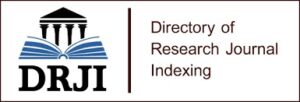The Role of LMRP Interventions in the Economic Empowerment of Rural Women, North Kordofan, Sudan (2017-2022)
This study aimed to stand up on the role of the program in empowering rural women through the economical interventions, to present applicable and scientific visions that can contribute in the economic empowerment of rural women, in addition to drawing the attention of the stakeholders in the public and private sectors towards rural women issues. The study followed the Integrated Geographical Vision approach for hypothesis discussion. Data was collected by using the primary resources as questionnaires, in addition to interview, observation, and focus group discussion, beside the secondary resources. The sample size was 204 respondents selected using simple random sampling technique. The Statistical Package for Social Science program (SPSS) was used for data analysis. The study results revealed that: 78.4% from the respondents had received financial services from the different financial types as: Internal, external and mixed type, while 39.7% only had received external financial services. The study concluded that there were significant differences in financial services distribution between targeted localities, hence Umrwaba was the first locality per (40.7%), then Alrahad and Bara localities per (21.0%) and lastly Sheikan locality per (17.3%) and that referred to the geographical distribution of microfinance institutions in the state. The study concluded that, the program interventions contributed in increasing respondent’s incomes per 38.8% for poor and economically active beneficiaries and per 5.4% for the rich ones, and in improving beneficiaries’ financial statuses per (65.7%) which indicated that the program managed to empower beneficiaries economically. The study revealed that the main challenges faced rural women’s empowerments were: Decreased financial services access represented (84.8%), decreased access to solar energy and LPG services represented (9.3%), domination of man represented (4.9%), in addition to increased illiteracy rates among women represented (1.0%). The study recommended for the necessity of proper selection and application of the appropriate gender approach, in addition to the establishment of: Financial portfolio including the potential financiers at state level as commercial banks and MFIs chaired by State ministry of finance. Public Private Partnership (PPP) unit at the state level. Departments at relevant ministries to shoulder the responsibility of leading the developmental activities after the phase out of the developmental programs. Community Investment Structures (CISs) at the administrative unit, locality, and state levels. At communities’ level the study recommended for Capacity building, increasing microfinance services access, and increasing women’s participation opportunities.
Keywords: Women’s Empowerment, Developmental Interventions, LMRP, NKS.




















